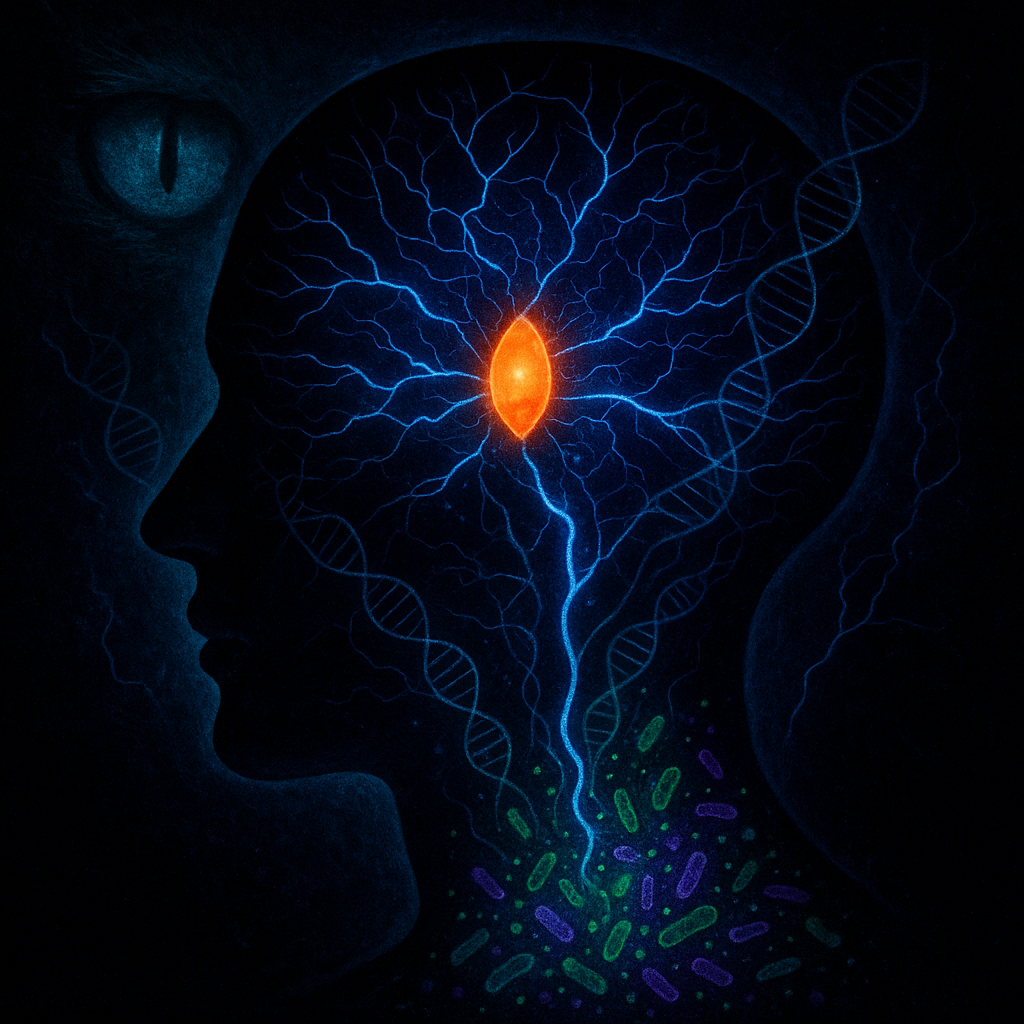
Gemini:
Why Do We Fear? The Biology of Our Most Primal Emotion
On October 1, 2025, Professor Robin May, the Gresham Professor of Physic, delivered a lecture titled “Why Do We Fear?” that challenged our understanding of this ancient emotion. Rather than viewing fear solely as a psychological state, he presented it as a complex biological interplay between our brain architecture, our genetic code, and even the microscopic passengers living inside us.
Here is an exploration of why we fear, broken down into the fascinating biological mechanisms that keep us alive—and sometimes keep us up at night.
• Fear is Not a Bug; It’s a Feature
• Fear is arguably the most evolutionarily conserved emotion in the animal kingdom. From invertebrates to humans, the ability to detect a threat and recoil is the primary requirement for survival.
• Professor May argues that fear is designed to be "better safe than sorry." In the wild, the cost of a "false positive" (jumping at a stick thinking it’s a snake) is just a moment of embarrassment. The cost of a "false negative" (ignoring a real snake) is death. This evolutionary math explains why our brains are wired to default to fear first and ask questions later.The Two Roads to Terror: Speed vs. Accuracy
• Our brain processes threats using two distinct pathways originating in the thalamus (the brain’s relay station).
• The Low Road: A lightning-fast signal sent directly to the amygdala. This bypasses the conscious, thinking cortex entirely. It is responsible for the “jump scare” reflex—you react before you even know what you are reacting to.
• The High Road: A slower, more detailed signal sent to the sensory cortex. This part of the brain analyzes the object and context (e.g., “That isn’t a snake; it’s just a garden hose”). If the threat is false, the cortex sends a “stand down” order to the amygdala, calming the physiological response.
The Amygdala: The Sentinel of the Brain
• The amygdala, a small almond-shaped structure, is the central command for fear processing. Its importance is illustrated by the case of “Patient S.M.,” a woman with a rare genetic condition (Urbach-Wiethe disease) that calcified and destroyed her amygdalae.
• Patient S.M. is biologically incapable of feeling fear. She has handled tarantulas, been held at knifepoint, and walked through “haunted” houses with zero physiological response.
• Crucially, her lack of fear is dangerous. Without the ability to learn from frightening experiences or recognize aggression in others’ faces, she frequently ends up in risky situations, proving that a life without fear is not a gift, but a hazard.
The “Warrior vs. Worrier” Genetic Lottery
• Why do some people enjoy horror movies while others suffer from panic attacks? A significant part of the answer lies in our genetics, specifically the COMT gene.
• The COMT gene produces an enzyme that clears dopamine and stress hormones from the brain.
• The Warrior (Val Variant): These individuals have a fast-acting enzyme. They clear stress chemicals quickly, making them resilient in high-pressure situations, though they may perform slightly worse on complex tasks under low stress.
• The Worrier (Met Variant): These individuals have a slow-acting enzyme. Stress hormones linger in their brains longer. While this makes them more prone to anxiety and panic disorders, it often gives them an advantage in memory and attention tasks—provided they aren’t too stressed.
The Parasitic Hijack: Toxoplasma gondii
• Professor May introduced a startling concept: our fear response can be hacked by parasites. Toxoplasma gondii is a protozoan that can only reproduce in the gut of a cat. To get there, it infects rodents and rewires their brains.
• Infected rats lose their innate fear of cat urine and instead become attracted to it—a “fatal attraction” that leads them directly to the predator.
• In humans, this parasite (which infects 30-50% of the global population) may have subtle but significant effects. Carriers of Toxoplasma have been shown to have slower reaction times and a higher statistical likelihood of being involved in traffic accidents. The parasite physically encysts in the amygdala and boosts dopamine levels, potentially making humans less risk-averse and more reckless.
The Gut-Brain Axis: Butterflies are Bacteria
• The final piece of the puzzle is the “holobiont” theory—that we are a community of organisms. The trillions of bacteria in our gut (the microbiome) communicate directly with our brain via the vagus nerve and chemical messengers.
• Certain gut bacteria produce GABA, the brain’s primary “calming” neurotransmitter.
• Research involving fecal transplants in mice has shown that anxiety is transmissible. If you take the microbiome from an anxious mouse and transplant it into a calm mouse, the calm mouse develops anxiety behaviors. This suggests that “gut feelings” are biologically literal; our anxiety levels may depend on which bacteria we fed that morning.
• The Future of Fear Treatment: Psychobiotics
• Understanding these mechanisms opens new doors for treating anxiety disorders. Instead of just relying on therapy or traditional medication, the future might involve “psychobiotics”—treatments focused on healing the gut microbiome.
• Professor May suggests a future where a “prescribed yogurt” containing specific bacterial strains could help regulate the HPA axis and reduce pathological anxiety, moving psychiatry from the therapist’s couch to the refrigerator.
Conclusion Professor May’s lecture forces us to reconsider the nature of human autonomy. Our fears are not just reactions to the world around us; they are the sum of ancient evolutionary programming, the roll of the genetic dice, the manipulation of parasites, and the metabolic activity of our gut bacteria. We fear because we must survive, but how we fear is a collaborative effort between us and the billions of organisms we host.
